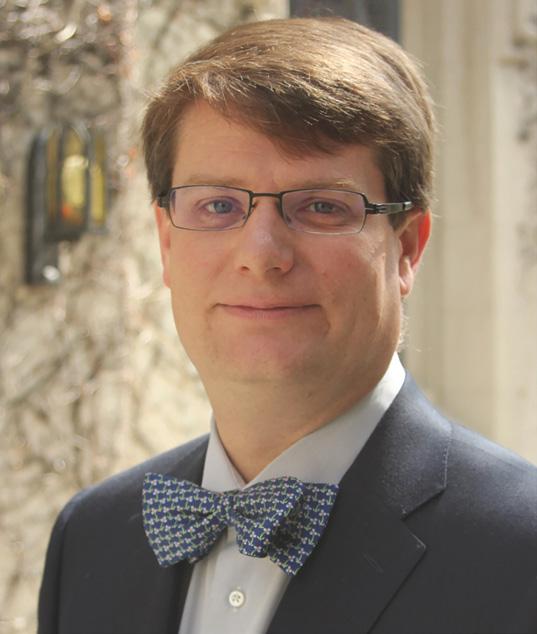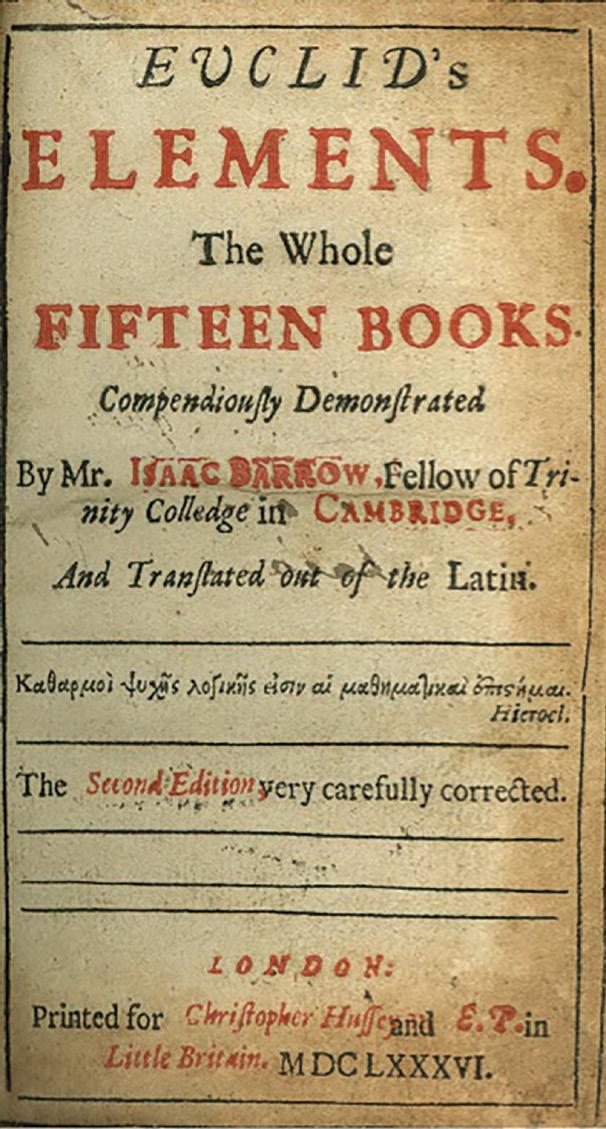
5 minute read
Permissions and Prohibitions A Mathematics Q&A
from School Ties
Permissions and Prohibitions:
a mathematics q&a with teacher william walton
Advertisement
Dr. William Walton grew up the child of educators in Chattanooga, Tennessee; his father taught him AP Calculus BC at the McCallie School. His teaching career began at Carnegie Mellon University, where he was one of only five undergraduates selected to work alongside graduate students as teaching assistants in the Mathematical Sciences department. Since then in his career, Dr. Walton has taught every single mathematics course, from Sixth Grade math through AP Calculus BC and Multivariable Calculus. At San Domenico, he teaches Middle School math, and he is a devoted environmental protection advocate.
Q. Imagine yourself talking to a first-grade student and the child’s grandparents. How would you explain the importance of math in relation to computers? Nobel laureate Herb Simon once described mathematics as “a system of permissions and prohibitions.” Modern computers function very much in the same way: event trapping to manage graphical user interfaces built on functions in order to display and calculate what, precisely, a user needs. Thus, for our imagined first grade friends, I’d say something like, “Mathematics is a way of saying what you’re allowed to do and what you’re not allowed to do. Computers work in this way, too, in that they only do what they’re told to do when they’re told to do it. They actually just play one long game of Simon Says and, because mathematics is built on doing what you can do when you’re told to do it, it’s what we need in order to make computers work.”
Q. what is your favorite equation and why? For a mathematician, this is hard to answer because scientists are often more caught up with the fun of specific equations, which they like because they’re drawn to equations that model real-world phenomena. That said, the Pythagorean formula — x2+y2=z2, the sum of the squares of the legs of a right triangle is equal to the square of the hypotenuse — is certainly pretty famous and has drawn ingenious proofs over the years, including one by President James Garfield.
Personally, I find Euler’s equation (a.k.a. Euler’s identity) eiπ+1=0 to be particularly beautiful, because it sums up three of mathematics’ most famous constants: e, π, and i alongside trigonometric forms of complex numbers. Anecdotally, I once was pleasantly surprised to see this equation on display in the men’s section of Bloomingdale’s department store in the Century City Mall.
Q. why is math critical to our world in an unknown and quickly-changing future? Mathematics teaches us how to think, make claims, and argue those claims. Mathematicians are always asking, “What would happen if I changed this rule? What would result?” Or, “How can I say this more simply?” In fact, one of the most famous 20th-century mathematicians, G.H. Hardy, once opined, “Sometimes one has to say difficult things, but one ought to say them as simply as one knows how.”
Mathematics has also been called both the queen and the servant of the sciences. It’s the servant because so many sciences turn to math in order to help


solve their problems; the practice of modeling real-world phenomena with equations is ubiquitous throughout both the hard and soft sciences. And, naturally, mathematicians think it’s the best and purest science, as this joke illustrates:
An engineer, a physicist, and a mathematician were on a train
James Garfield
heading north, and had just crossed the border into Scotland.
The engineer looked out of the window and said, “Look! Scottish sheep are black!”
The physicist said, “No, no. Some Scottish sheep are black.”
The mathematician looked irritated. “There is at least one field, containing at least one sheep, of which at least one side is black.”
Most importantly, mathematics encourages us both to be specific and to generalize — mathematicians are always looking for and exploring connections. Oftentimes, what’s considered “pure” mathematics — math without any real-world connection — becomes applicable decades later. For instance, mathematicians working in number theory have long been fascinated by prime numbers. For many years, such work was viewed as having little real-world connection. Now, in an era of constant connections, prime numbers are used to encrypt communications. For example, they are being used for secure connections each time you swipe your credit card.
Q. why do you love and teach math? As someone with academic backgrounds in both mathematics and creative writing, I recognize that mathematics is not necessarily the love of every student in my classroom. Because of this, I try to underscore the connections math has to the humanities — argument, persuasion, language, proficiency, creativity — while also making sure to challenge students for whom mathematics is a love and gift. The logic behind the Riemann integral — used to calculate area under a curve — is something that can be explained to almost any adult at a cocktail party. It’s inherently beautiful and yet the mathematical machinery underlying it takes 12 years of study (K-12) in order to be able to replicate. I also try to let students know that mathematics, itself, has a history — the way we teach students calculus now, for instance, is not the way in which it was developed.
Q. what do you consider the greatest feat that math has made possible? This is really hard to answer. Certainly the concept of zero — developed independently by the Mayan people of North Central America and the Indian people of the Asian continent — is important. And we still use vestiges of the base 60 used by the Babylonians to tell time. Mathematics is really just a system for knowing, and for both interacting with, and also escaping, the real world. G.H. Hardy wrote, “A mathematician, like a painter or poet, is a maker of patterns. If his [sic] patterns are more permanent than theirs, it is because they are made with ideas.”
pythagorean theorem. In any right triangle, the sum of the squares of the lengths of the two shorter sides (called legs) is equal to the square of the longest side (called hypotenuse). x2 + y2 = z2
fermat’s theorem. First posited by Fermat in the margin of a book in 1637, the theorem remained unproven until 1995. Fermat’s Last Theorem is often thought of as saying the generalization of the Pythagorean Theorem doesn’t exist. That is, for any natural number n > 2 there are no solutions to the equation xn + yn = zn .
euler’s identity or euler’s equation. In Euler’s Identity, e is Euler’s constant used to describe natural exponential growth, i is the imaginary number i2 = −1 and π is the irrational constant that’s equal to the ratio of the circumference to the diameter of any circle. eiπ + 1 = 0










